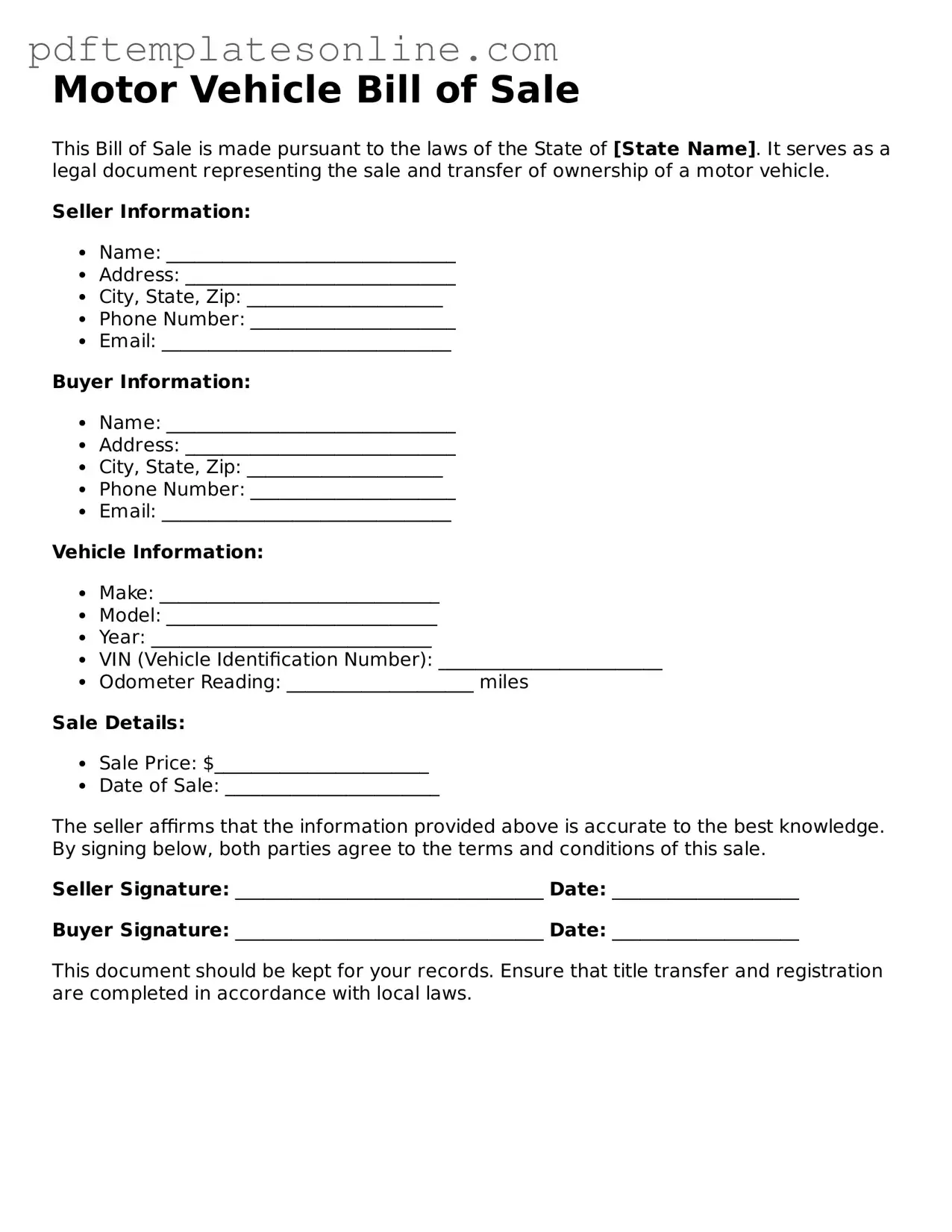Completing a Motor Vehicle Bill of Sale form requires attention to detail. One common mistake is failing to provide complete information about the vehicle. This includes the make, model, year, and Vehicle Identification Number (VIN). Omitting any of these details can lead to confusion or disputes later on.
Another frequent error is not including the correct sale price. The amount listed should reflect the actual transaction. If the price is inaccurate, it may affect tax obligations or create issues during the registration process.
People often overlook the importance of signatures. Both the seller and buyer must sign the document for it to be valid. Without these signatures, the bill of sale may not hold up if any legal questions arise regarding the transaction.
Not dating the form is another mistake that can cause problems. The date of sale is crucial for establishing the timeline of ownership transfer. A missing date can complicate matters, especially if the buyer needs to register the vehicle or if any disputes arise later.
Some individuals fail to keep a copy of the completed bill of sale. It is essential for both parties to retain a copy for their records. This document serves as proof of the transaction and can be useful for future reference.
Lastly, neglecting to check for any local requirements can lead to complications. Some states have specific regulations regarding the sale of vehicles. It is important to ensure that all necessary information is included and that the form complies with local laws.
